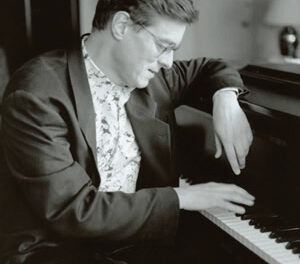The subdued dynamics of a consort of viols would have been lost in Hill Hall Auditorium, but the intimate space of Person Hall was ideal for a broad range of music for viols, baroque instruments, and singers presided over by UNC’s avuncular Brent Wissick on December 3. Listeners were almost cheek to jowl in what he asked us to consider as a “living room.” There were four groups of performers with some crossover among them. Three were UNC ensembles led by Wissick — the UNC Consort, consisting of a full case of viols (treble, tenor, and bass), violin and keyboard; the UNC Baroque Ensemble (violins, viola, cello, natural trumpet, and keyboard), and the Beginner Viols. UNC alum Lee Bidgood, violin, and Loren Ludwig, bass and treble viols, were guests from the University of Virginia.
The cozy space was exemplary for hearing two young sopranos. Rachel Wender sang the solemn “Il bianco e dolce cigno” of Jacques Arcade (1505-56); the simple and eloquent melodic line is set against a subtle tapestry woven by a consort of viols. Her timbre was pleasant and her diction, clear, and her musical enterprise is further demonstrated by her membership in the Beginner Viols. Abbey Thompson’s almost instrumental high notes were shown to good advantage and nicely supported by the Baroque Ensemble’s fine playing in Henry Purcell’s “Hark, the echoing air” from the The Faerie Queen. Her singing was paired with fine natural horn playing by Deidre Pellitier, whose long, valveless instrument used a trombone-like slide.
UVA visitor Ludwig, an ecology graduate student, began his gamba studies in high school. He exhibited considerable virtuosity, smooth bowing and fine intonation in a complex solo for bass viol, “Captain Hume’s Pavan” by Tobias Hume (1569-1645). Of greater interest was his tenor viol performance of the Division in G by Christopher Simpson (1605-69), in which he was joined by Wissick, bass viol, and Kevin Bartig, chamber organ. This is an imaginative set of variations using 27 repetitions of the ground bass.
Perhaps the most challenging and interesting works were two sophisticated pieces by William Lawes (1602-45). Members of both the UVA and UNC Consorts joined to play the Pavane and Galliard from Lawes’ “Royal Consort” No. 2. Wissick indicated the composer’s use of the theme from John Dowland’s “Lachrimae” in the opening of the pavane, saying that the tune was as popular among Lawes’ contemporaries as “Somewhere Over the Rainbow” is to ours. Wissick also noted that that many listeners think the composer’s music sounds “weird” because of his adventuresome style.
“Typical was a startling matched dissonance played by the pair of violins near the end of the pavane, resulting from what David Pinto, writing in New Grove II, calls Lawes’ “harmonic boldness and melodic abruptness.” The composer’s Consort Suite No. 1 (Fantasia, Almain, and Galliard) was totally convincing. It was a joy to hear the lively equality of the parts as performed by baroque violinist Bigwood with Ludwig, tenor viol, Wissick, bass viol, and organist Bartig.
These were just the highlights of a richly imaginative program of short and mostly little known works. We were sorry to learn a serious hand injury kept lute player Mark Porcaro from performing and wish him a speedy recovery. Alas, Wissick has shelved his justly famous rendition of Humes’ “Tobacco,” but he improvised a lurid tale of a certain winged child with bow and arrow who tricked his way into the teller’s home “on a dark and stormy night,” set to Henry Lawes’ (1596-1662) “A Tale Out of Anacreon.” (Of course Cupid left the tenor with a broken heart!) The high level of technique shown by the students, for many of whom music is an avocation, was heartening.











